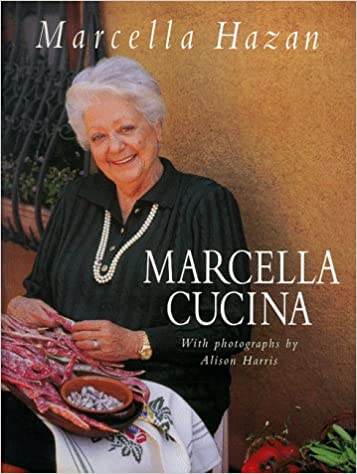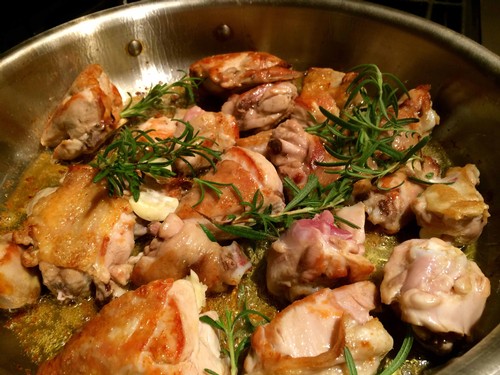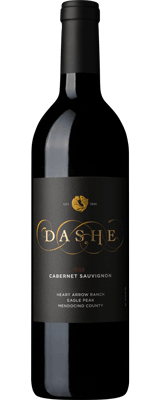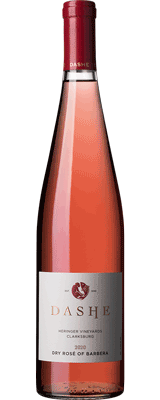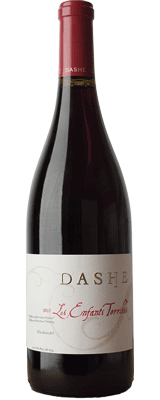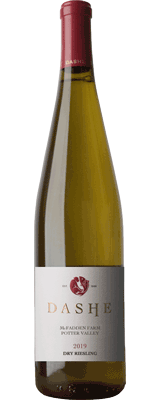The Dish @ Dashe
Fish Tales and Monkey Business from the Team at Dashe Cellars
 Mike Dashe Co-founder & Director of Winemaking
Mike Dashe Co-founder & Director of Winemaking
 Anne Dashe Co-founder
Anne Dashe Co-founder
 Rene Calderon Winemaker
Rene Calderon Winemaker
 Monica Chappell Wine Club Manager
Monica Chappell Wine Club Manager
RECIPE ALERT! Dashe Heart Arrow Cabernet Sauvignon paired with Chicken Marsala
Single-Vineyard Heart Arrow Cabernet Pairing
A Chicken Marsala Recipe from the Master
Home cooks like me have used Marcella Hazan’s classic cookbooks for years (my copies are splattered and worn.) In my opinion, there is no one more passionate and inspiring about cooking authentic Italian food. Marcella Hazan, the godmother of Italian cooking in America, is the author of The Classic Italian Cookbook, More Classic Italian Cooking, Marcella's Italian kitchen, and Essentials of Italian Cooking. I have them all in my kitchen library.
For this recipe, there are two special ingredients creating magic: the dried porcini mushrooms, and the Marsala wine. The dried porcini is an aromatic essence of porcini mushrooms. The difference between fresh and dried porcini can be compared to the difference between a bouquet of fresh flowers and the aromas in a bottle of perfume. As for the Marsala, it is a fortified wine from the town of Marsala in western Sicily. For cooking purposes, look for the word secco, which means dry, although it is still slightly sweet.
We have chosen this Chicken Marsala recipe as an unusual pairing to go with our single-vineyard Cabernet Sauvignon. Typically, chicken recipes are too light to pair well with Cabernet, but in this case the earthy porcini mushrooms and the complex flavors of the Marsala meld perfectly with the richness of the single-vineyard Heart Arrow Cabernet Sauvignon.
This Recipe Feeds 4 People
INGREDIENTS
• 1 ounce imported dried porcini mushrooms
• A 3½-pound chicken, cut into 8 pieces
• Flour for coating the chicken, about ½ cup
• 2 tablespoons vegetable oil
• 1 tablespoon butter
• Salt & Black pepper ground fresh
• 3 tablespoons chopped onion
• ⅓ cup dry Marsala wine
NOTE: You could also use bonless skinless chicken breasts pounded into paillards instead of the chicken pieces.
METHOD
1. Soak the mushrooms in 2 cups warm water for at least 30 minutes. Lift out the mushrooms by hand, squeezing as much water as possible from them, letting it flow back into the container where they soaked. Pat dry with paper towels and chop them very fine. The water in which the mushrooms soaked is richly infused with porcini flavor. Filter the water through a strainer lined with cheese cloth, collecting it in a bowl or a pouring cup. Set aside.
2. Pat the chicken as dry as you can with paper towels. Spread the flour on a plate and turn the chicken in it.
3. Choose a skillet or sauté pan that can accommodate all the chicken pieces in a single layer without overlapping, put in the oil and butter, and turn on the heat to medium high. When the butter foam begins to subside, slip in the chicken. When all the pieces have become well browned on one side, add salt, black pepper, and the chopped onion, and turn the pieces over.
4. When the chicken has become browned all over and the onion has become colored a rich gold, add the Marsala wine. Let it bubble briskly for just a few seconds, add the chopped porcini mushrooms, turn the ingredients over with a wooden spoon, then cover the pan and turn the heat down to medium low.
5. Cook the chicken at a slow but regular simmer, replenishing the cooking juices when they begin to dry out with 2 or 3 tablespoons of the filtered water from the mushroom soak. Turn the chicken pieces over every once in a while and continue cooking until they feel very tender when prodded with a fork and the meat looks as though it would easily fall off the bone, about 50 minutes to 1 hour. The cooking juices should have condensed into a small amount of creamy sauce. If there is too much fat floating free, tip the pan and spoon it off. Transfer the entire contents of the pan to a warm platter and serve at once.
Single-Vineyard Heart Arrow Cabernet Pairing
WINE PAIRING:
The Marsala intensifies and develops a deep, concentrated flavor as it reduces. This sauce captures this quality along with the earthy flavors of the porcini mushrooms. The result is an intense, full-flavored dish that marries well to the ripe fruit of the single-vineyard Cabernet. This pairing is a good example of finding parallel intensity both in the dish and the wine.
Single-Vineyard Heart Arrow Cabernet Sauvignon Tasting Notes:
Color: Purple Black
Aromas: Black cherry, blackberry, cassis, graphite, violets, black pepper, minerals
Taste: Almost Bordeaux-like in structure, with good acidity, velvety mid palate, and a spectrum of complex fruit flavors. Entry of blackberry, cassis, black cherry, violets, and then broader flavors of pencil lead, forest floor, black cherry. Finish of blackberry, black cherry, mineral, and black pepper.
Click Here for the 2018 Single-Vineyard Cabernet Sauvignon, Heart Arrow Ranch
This recipe was taken from Marcella Hazan’s cookbook Marcella Cucina published in 1997.
The 2021 Harvest in photos

Mike loading up bins to head up to Dry Creek
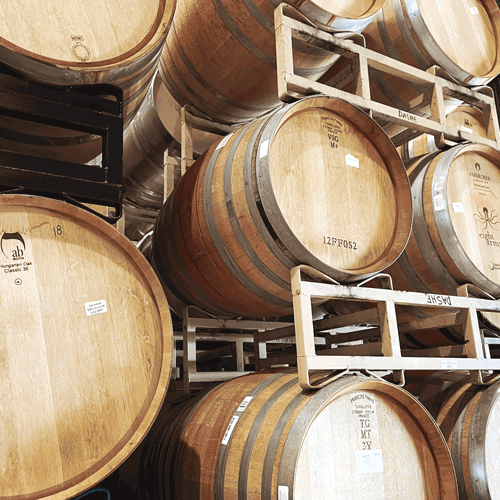
Cleaned and stacked and ready to be filled after bottling
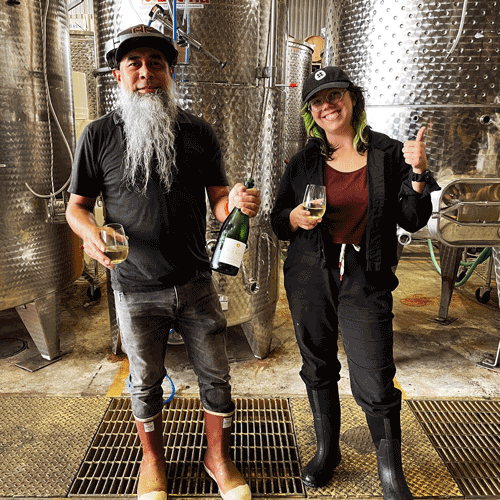
Rene and one of our harvest interns, Haley, toasting to the end of her first day in the cellar
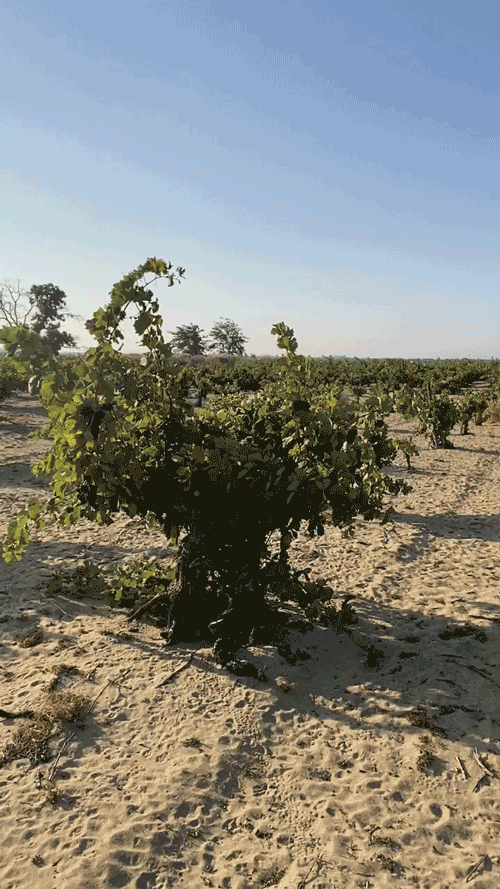
Old-Vine Carignane planted in the sandy earth

Bins as high as you can see
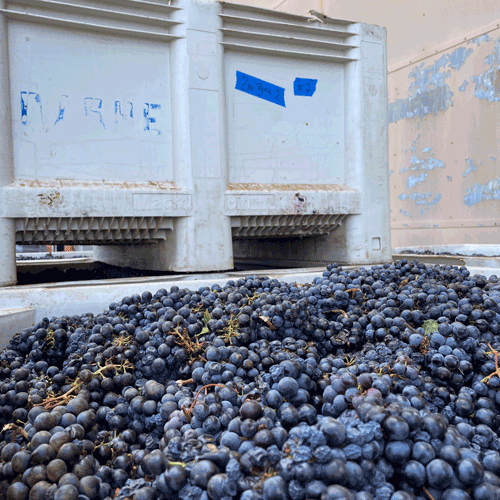
A gorgeous bin full of fruit from the Louvau Vineyard
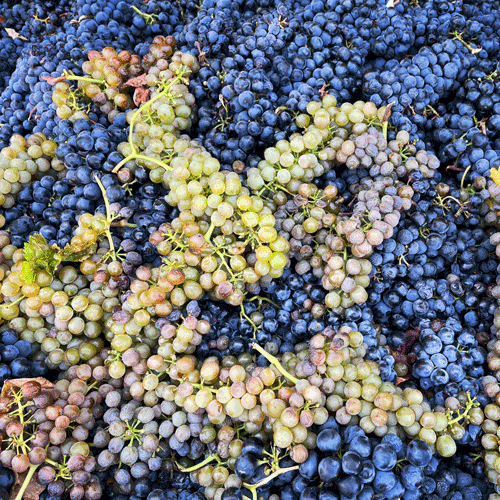
A field blend from the Pilsbury Vineyard, a brand-new partner us this vintage!

Our crushpad with a view

Rene's been logging some major miles in the forklift
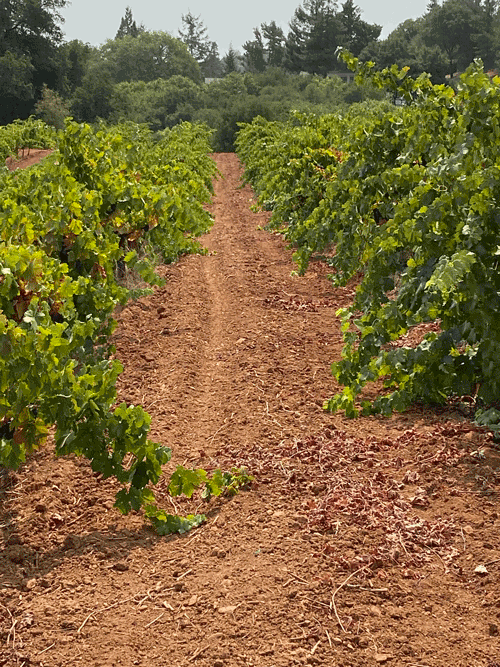
Can you guess where this is? Leave a comment below!
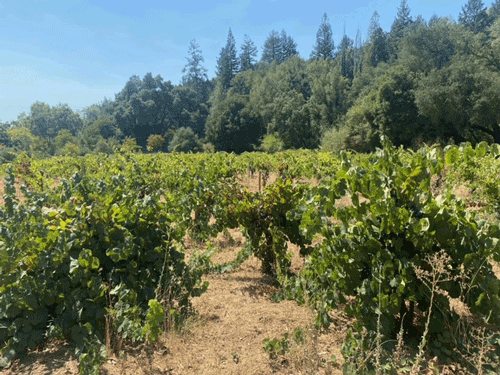
Crazy head-trained vines at the base of the foothills in Dry Creek
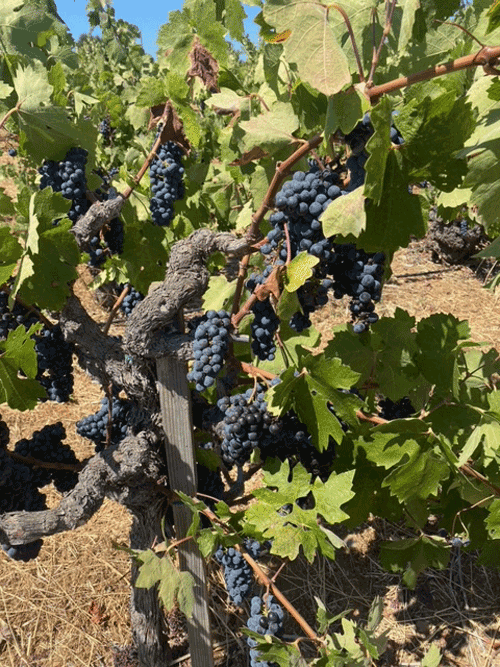
Before...
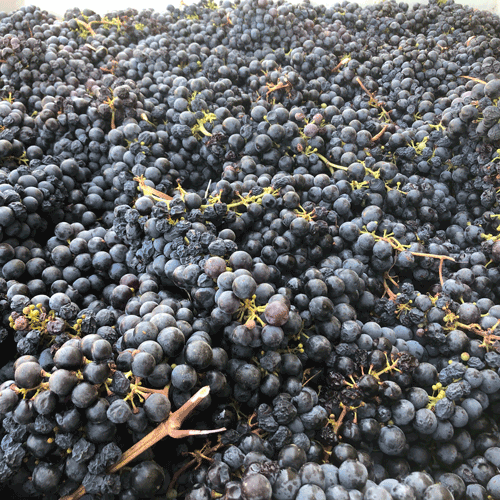
... and after!
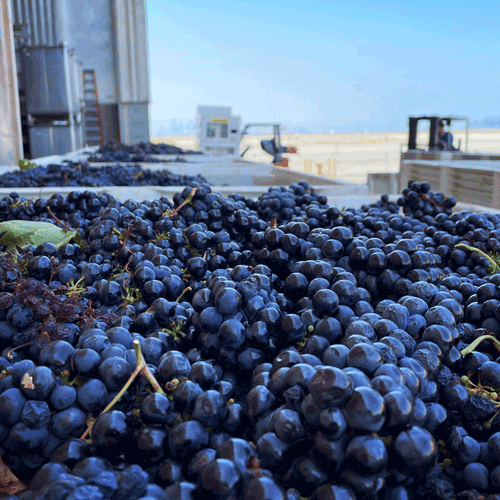
These grapes are ready for their close-up
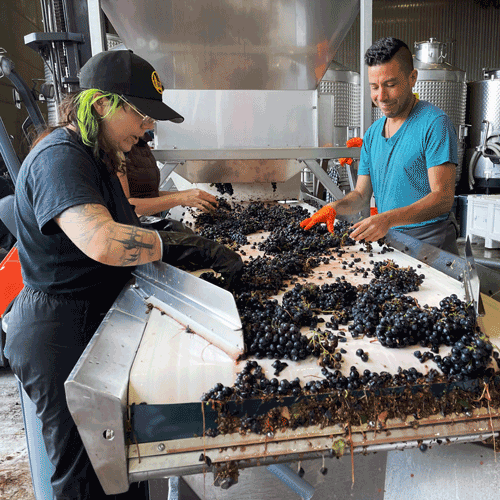
Haley, Anne, and Jose at the sorting table, making sure that only the best fruit makes it into tank
Summer Chill'n
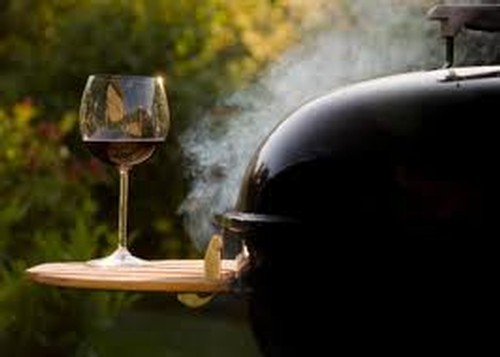
With summer in full swing, it's easy to find yourself pouring wine that is either too cold or too warm.
Just as the right glass will enhance your wine experience, serving artisanal wine at the ideal temperature is equally as important.
When it comes to knowing what temperature to serve a wine, you can follow this easy-to-remember tip: twenty minutes before serving, take the white wine out of the fridge, and put the red wine in. This rule is intended to fix the two most common mistakes in wine service—serving white wines too cold and red wines too warm.
Now, this is not something to lose sleep over, but the fact is that properly chilled artisanal wines do taste noticeably better.
Serving wine at its proper temperature enables you to taste wine at its full potential. Most of the enjoyment that comes from drinking artisanal wine involves its aroma. Taste only has four aspects: sweet, sour, salty, and acid. The nose does the rest. Vapors are created as artisanal wine warms up, so the wine needs to be a few degrees below its ideal drinking temperature for you to enjoy it at its finest. To be confident the wine you serve will be on its best behavior know the whole story.
Red Red Wine
If you've heard the old adage that red wines need to be served at "room temperature" don't forget that "room temperature" can be considerably higher in the summer. In fact, the adage that red wine should be served at room temperature was coined when people were storing and serving wine from their cellars, where wine was kept quite cool. Most artisanal red wines are at their best at cool room temperature, 62 to 65 degrees Fahrenheit. Light reds benefit from being served slightly cooler than full bodied reds. Keep reds too warm and they will taste alcoholic and even vinegary. Too cold and they will have an overly tannic bite and much less flavor.

Created in a lighter style and perfect for a slight chill, our 2018 Heart Arrow Ranch Zinfandel comes from an amazing biodynamic farm in Mendocino County. Biodynamic farming techniques, together with our old-world winemaking, create a broad range of aromas, flavors, and structure akin to a wine from Burgundy or Beaujolais. We ferment with native yeasts and age in a 900 gallon French oak barrel, resulting in a soft and elegant “Old-World” style wine.
Refreshing Whites
Just as many reds are served too warm, most white wines are served too cold. Artisanal white wines are best between 55 and 62 degrees. Chilling white wines properly preserve their freshness but too cold and they will be nearly tasteless. White wines served too warm will taste alcoholic and flabby.

Our 2019 Chenin Blanc “Concrete Cuvée,” Clarksburg was inspired by the Loire Valley wines the Dashe family enjoys every summer in France! Fermented in a large concrete egg, which suspends the lees for toasty overtones and preserves the wines delicate freshness and aromatics, this Chenin blanc is one of our most vivacious, textured, and seductive wines.
Bubbling Beauties
Sparkling wines should start out totally chilled and are best served between 40-45 degrees. Put them in the refrigerator an hour and half before serving or in an ice bucket with water for at least 20 minutes before serving. Artisanal sparkling wine will not stay at a constant temperature once it is out of the fridge so keep an ice bucket handy or put the bottle back in the refrigerator between pours.
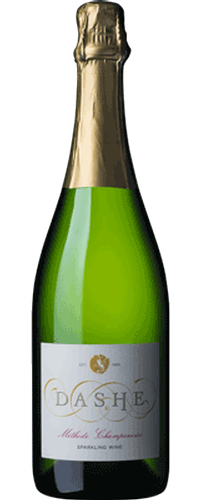
The vintage of 2016 marked the 20th anniversary of the founding of Dashe Cellars, and we felt that a sparkling wine was a perfect way to celebrate this occasion. We have long admired the beautiful sparkling wines made in the Loire Valley from the Chenin Blanc grape, and for this initial wine we used 100% Chenin Blanc from the Heringer Vineyard in Clarksburg, California.
You need not become a maniac with a thermometer to keep artisanal wine the right temperature range; a little experience and a little tasting, and the wine itself will tell you everything you need to know. So, chill this summer with a perfectly chilled glass of wine.
News from the Cellar--Springtime in the Vineyards and Cellar
What's Happening at Dashe Cellars?
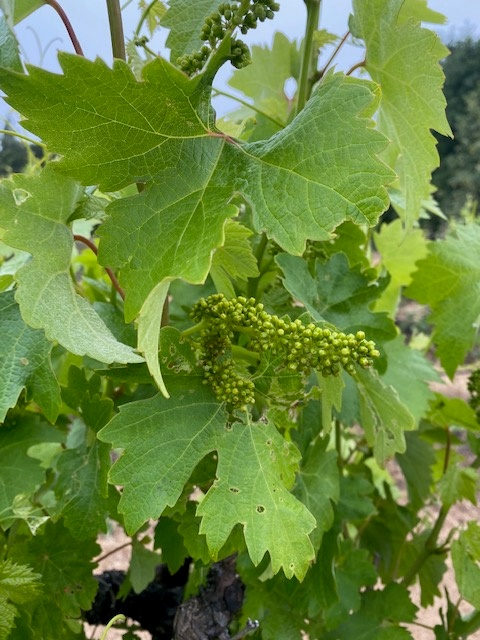
This is always a wild time of year, as we watch the grapevines develop flower clusters and we get an idea of how the crop will develop this vintage. We love looking at the tiny clusters (and of course the even tinier flowers) and the greenery develop throughout the vineyard. It’s a beautiful time of year.
Although the clusters are tiny, they contain vital information about how heavy the crop will be and how many clusters are loaded on the vine. Although you really can’t judge the quality of the fruit, you can certainly make some intuitive guesses based on how healthy the vine looks, how the weather has been at this crucial time of development, and how early or late the crop will be in the fall.
More than anything else, it tells you that the clock is ticking and that we’ll be harvesting grapes before we know it. It always seems like the last vintage just finished and that we have plenty of time to prepare, but then the vineyard itself seems to come back to us every year and reminds us that we don’t have nearly as much time as we think.
The Calm before the Storm
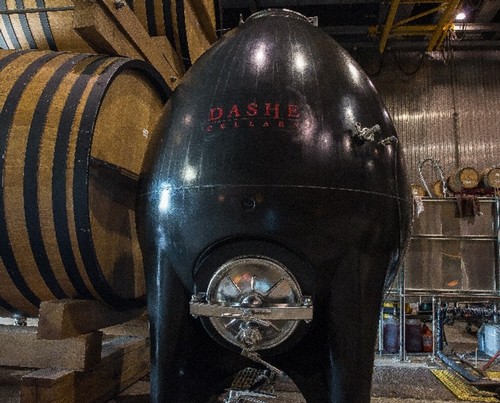
In the cellar itself, it’s always a calm time, as we taste the developing wines, rack them from barrel to tank or barrel to barrel, and start preparing equipment for the harvest. It’s amazing that we need to ramp up for harvest so far in advance of the grapes’ ripening, but August is just around the corner and some of our vineyards in Contra Costa county are actually harvested in mid- to late-August.
We love to hang out in the winery—it always stays within the same range of temperatures no matter what time of year, because there's so much insulation in the 60 ft ceilings and the building itself it made out of thick concrete blocks. Many thanks to the US Navel Airforce, who built this building so solidly and with so much natural insulation.
Now, we just prepare the cellar and wait for the grapes to ripen. This year has turned out to be pretty dry, which is not terrible for the grapevines (they can survive much more than most fruit trees, for example) but we certainly hope that we have a bit of moisture before the grape clusters get very much more developed.
We will let you know before too long how the vineyards are coming along and how the quality of the 2021 vintage is shaping up. In the meantime, we suggest pouring a glass of wine and hanging out in the shade (preferable at our SF City View Patio!) and enjoying the summer.
Squeezing Grapes for Rosé: Artisan Wine Making Pink Style
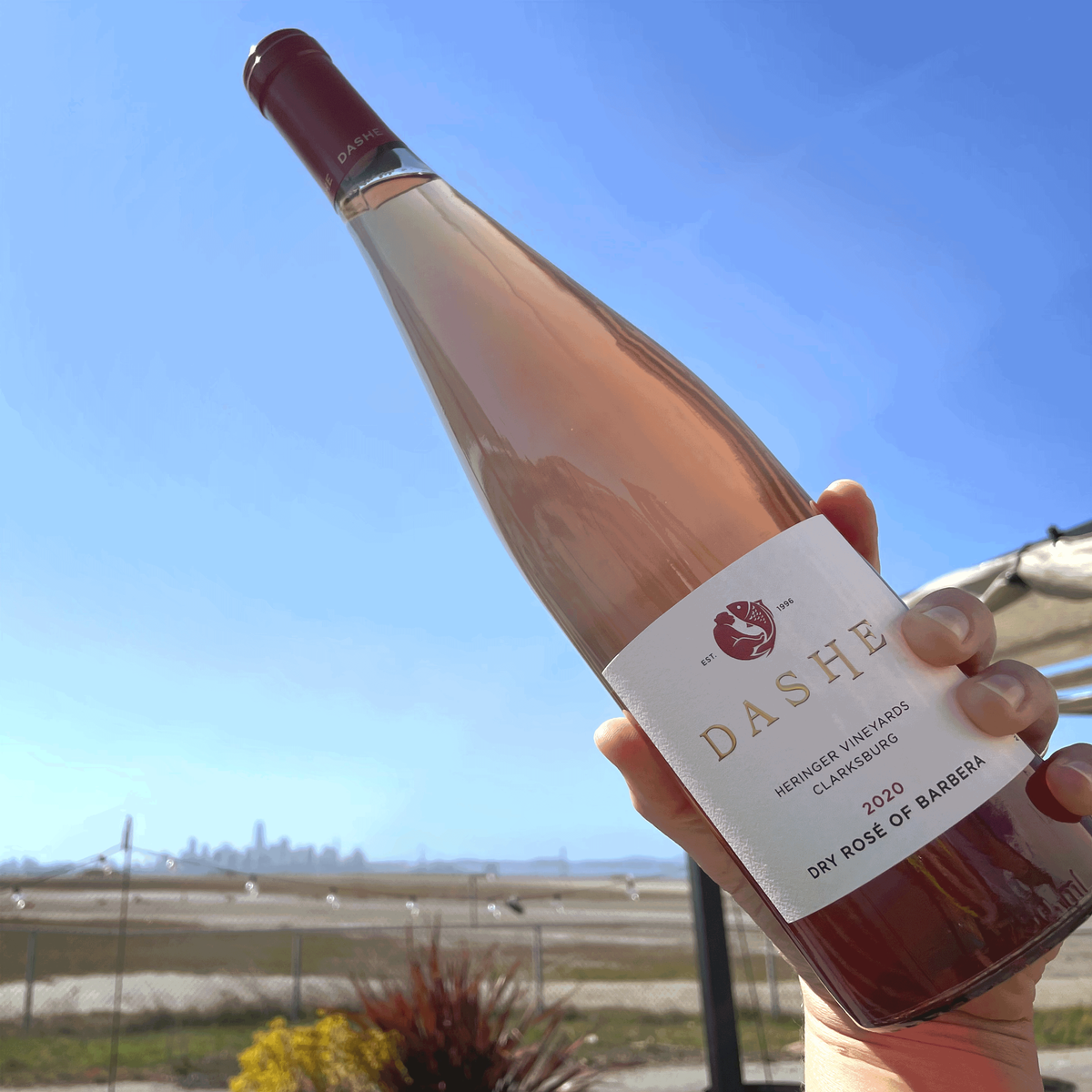
It’s getting hotter, which means that rosé wines are getting popped into ice buckets and refrigerators. Every wine maker I know is releasing (or has released) a rosé, and Dashe Cellars is no exception.
I’ll confess, we have changed our methods of making rosé over the years. Quite a while ago, our method of making rosé was a relatively simple one. We would crush red grapes—usually Grenache grapes from Dry Creek Valley—which were destined to make a bigger, more substantial wine, and simply bleed off pink juice from the tank after about 8 hours of skin contact. Voilà! Instant rosé.
Let it Bleed
This process of making rosé by “bleeding” the tank is called “saignèe,” from the French word for blood, and is probably one of the most common methods of making rosé around the world.
There certainly are a few advantages to making a rosé this way. First of all, it’s a great way of improving the depth and intensity of the red wine in the tank from which you’re bleeding off the rosé juice. Since you’re increasing your grape to juice ratio, you get more color in the wine from which you’re bleeding off. Plenty of jet-black wines on the market are helped by bleeding the tanks.
Another definite advantage is that you can pick the color of your rosé by simply looking at the juice every few hours. As time goes by, you get more color until you decide you have enough color (or the right hue of pink) and then you frantically drain the juice off of the red skins before the color changes and becomes too dark.
The drawback to this method is that if you get your timing wrong, your rosé can be too light or too dark, and the only way to adjust is by blending red or white wine into your rose to try to adjust the color.
Hot off the Press
The other method, and the one that we’ve gravitated to over the years, is dedicating the grapes you select to be rosé (and only rosé). Using this method, you designate a vineyard (or a block within a vineyard) to be your rosé block and dedicate those grapes to just be used in your rosé program. You then pick the grapes exactly when you want to make your rosé and dump them directly into the press (or occasionally, crushing the grapes and letting them sit in bins for a bit of time to pick up color, and then dumping them into the press).
This direct press method has some distinct advantages.
First and most important, since you’re dedicating these grapes to be rosé, you can select the time of picking the grapes to be ideal for making a rosé-style wine. In our case, we like our rosé wines to have good acidity, so as long as the flavor profile is correct, you can pick grapes earlier than you normally would for making red wine, so that the wine is crisp and flavorful with acidity.
Second, you can select a varietal specifically for rosé. In our case, we decided to try to use Barbera from a Clarksburg vineyard as a rosé grape, because it’s a naturally high-acid grape and makes a very refreshing, zingy wine.
An added benefit of early picking is that your rosé is lower in alcohol because you’re picking grapes before they produce a high amount of sugar.
Color is king
The final reason we love to press our rosé directly from the grapes is that we obtain a beautiful pale salmon color; quite a bit different than the color that we would obtain using the saigneé method of bleeding the tank.
Of course, wonderful wines are made using both methods of wine making, and everyone has their preference for what kind of rosé they like.
Our rosés are finished completely dry because that’s our preference. Some people prefer a bit of sweetness to their rosés, which is completely a personal taste.
What’s important is that rosés have finally risen in prominence in the wine-drinking community.
Personally, I believe that there’s nothing better than a crisp, cold rosé on a Spring or Summer day, paired with something off of the grill or with a fish stew such as a French bouillabaisse. The acidity pares perfectly with food, and the wine itself provides an immensely satisfying way to balance the heat.
Spring has Sprung at the Winery

Well, Spring is finally here and with some luck, we’ll have been through the worst of this last year and starting to be (relatively speaking) back to normal. Not a minute too soon. We’ve all endured one of the most trying years of our collective lives, and now that the days are longer and lovely Spring afternoons are warming us, it’s our fervent hope that all of you are feeling better and are optimistic about the future.
We really can’t say thank you enough to have supported us during the most difficult year in our 26 years in business. One of the best things that emerged from this last year was that we discovered how much people have enjoyed the City views and the bird sanctuary in front of the winery on our City View Patio. We’ve loved having you come out and share this outdoor space with us, drinking wine and enjoying food from our food truck purveyors. Your spirit and enthusiasm has sustained us here at Dashe and we certainly wouldn’t have survived this last year without you to help us through it.
Amazingly, now we’re making our plans for this upcoming harvest. Bud-break has happened in the vineyards and the vines are starting to push out. Nothing like growing things to remind us that nature doesn’t wait for pandemics or politics—when it’s time to harvest, it’s time to harvest. We’re excited as always about the ripening grapes and our plans for upcoming wines.
–Best to you all, Michael and Anne Dashe
A Lighter Shade of Zinfandel, or My, How Times Change
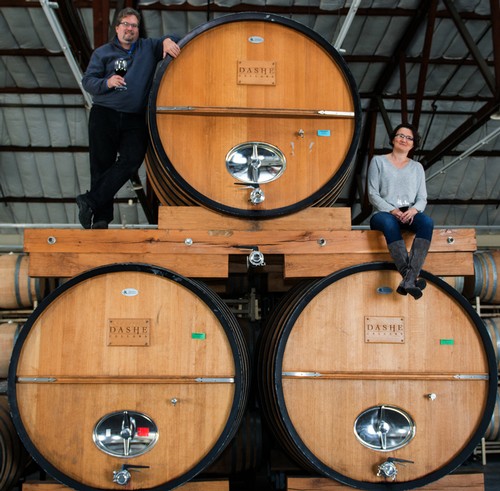
Last year, the wine writer Eric Asimov, long time New York Times wine columnist, wrote a two-part series for his Wine School column entitled “Revisiting Zinfandel from a Less Brawny Angle” and “Finding the Heart of Zinfandel.” The focus of the two articles was to taste three current examples of Zinfandel—all of which were a more modern, lighter, and less alcoholic styles—to see how recent styles of Zinfandel compared with the bigger, jammier, more alcoholic styles of popular Zinfandels from a decade or more ago.
Frankly, the focus of the article was that Mr. Asimov’s tastes had moved away from drinking Zinfandel a few years ago because of heavy-handed ripe flavors in some of the most popular zins. He was looking to see if recent offerings from wineries that made less brawny Zinfandels was more interesting and palatable, both to him and to his readers who commented on the wines.
Here at our little urban winery at Dashe Cellars, we were gratified that he selected a Dashe wine—the 2018 Zinfandel Vineyard Select—for his widely-read Wine School series. In the introduction, he said that “I selected the Dashe because I generally like this producer’s wines, they were fairly widely available, and the bottle was cheaper than the other two.”. We’ll take that—and we’re glad that Asimov enjoys our wines.
The Times have Caught Up with Dashe Cellars?
Personally, we were a bit amused by the premise of the article because it implied that it was only a recent development that certain wineries had moved towards making lighter, more elegant Zinfandels.
But those of you who know Dashe Cellars wines from when we started in 1996 know that we have always selected vineyards and used wine making practices to make lighter, more delicate, yet complex and balanced Zinfandels.
Although our single vineyard wines such as the Louvau Vineyard Old Vines Zinfandel has traditionally been less alcoholic than our peers, we really turned the Zinfandel world on its head in 2008 when we released our first “Les Enfants Terribles” single vineyard wine—a Zinfandel, naturally—from the McFadden Farm in Potter Valley.
Are we Drinking all 500 Cases Ourselves?
The first Les Enfants Terribles wine was a fluke, in a way, because it was a phone call from a sommelier—Mark Ellenbogen from the Slanted Door restaurant in San Francisco—that sparked the creation of this wine.
Mark was extremely diligent about which wines made his Wine List at the restaurant, and he loved softer European reds such as Gamay-based wines from Beaujolais region in France, and a wide array of Pinot Noir-based wines, also from Europe.
When the Slanted Door was criticized from some quarters for not having many domestic wines, Mark reached out to me and asked if it was possible if we might make a single vineyard wine that had many of the attributes he loved in his favorite European wines to go with the cuisine from the Slanted Door: lower alcohols; lower tannins; little or no oak influence; beautiful softer fruit character; a softer, velvety texture.
I had just seen the Zinfandel grown at McFadden Farm—a high elevation vineyard—and the red grapes were surrounded by Riesling, Pinot Blanc, and Gewurztraminer white wine grapes. I immediately loved the fruit flavors of the Zinfandel but was shocked at how light-colored the red grapes were. When Mark called me up, I said that I had found the perfect grapes to make a “Beaujolais-styled” carbonic maceration wine.
We had just purchased a 900-gallon oak foudre from Burgundy, and decided we would make all of the Zinfandel in the vineyard, and age it in this huge single barrel.
When we made the wine, using the carbonic maceration technique of whole berries and whole clusters, the wine was gorgeous, but the color was so pale red that it looked like a Gamay or Pinot Noir. I was so shocked that I turned to Anne and asked “are we going to have to drink all 500 cases of this wine by ourselves?” She turned to me and said “you’re crazy. This is exactly what I had in mind when we made this wine. People will love it!”
Click Here for 2017 Zinfandel, Mendocino Cuvée
We’ve Been Making Trendy Wine for 26 Years!
I shouldn’t have been so worried. The first Les Enfants Terribles 2007 Zinfandel from the McFadden Farm went on to become a tremendous hit at the Slanted Door, and soon word got around that Dashe Cellars was making this carbonic maceration Zinfandel that tastes unlike any other Zinfandel on the market. The wine became a darling of wine drinkers around the country who liked European wines for their balance and lower alcohols but wanted the vibrant fruit of a California wine at the same time.
Compared to many other Zinfandels out on the market, Dashe Cellars Zinfandels are lighter in style and have a certain balance between fruit and acid, with less oak and tannin on the finish. We’ve been making Zinfandels in this style from when we first released a single vineyard wine—a 1996 Dry Creek Valley Zinfandel—and have kept this signature style since.
It used to be that very few wineries were making wines that were lower alcohol and fermented on native yeast. No more—it’s quite common for new wineries to make wines in this style. We are pleased that after all these years following our heart, making wines that had a balance of an “Old-World” wine, our style is now very much on target for young, innovative wine makers.
We are huge believers in making wines that reflect the vineyards, and our style champions this type of artisan wine. Many thanks to Eric Asimov and other wine writers that now are highlighting our style of wine to a broader market of wine drinkers. For 26 years we’ve made wines that are now touted as “trendy,” due to their restraint and balance. We might not be a new winery, anymore, but we’ll take the trendy label anytime, as long as people enjoy the wines.
Happy Birthday Riesling!
We have more than a casual interest in Riesling, since we make a single vineyard wine from a wonderful old-vine Riesling vineyard in Potter Valley.
In case you didn’t know, March 13th has been officially designated as Riesling’s Birthday; Happy 586th Birthday, Riesling, you don’t look a day older than 400. The reason for that date is that the earliest recording of Riesling dates to March 13, 1435 in Germany, when the first Riesling single-vineyard wines were officially recorded.
For me, Riesling is the wine world's best-kept secret. Few great grapes are so affordable, grown worldwide and liked by so many. Its hallmarks are floral aromas, spice, citrus, and stone fruit flavors, and my favorite component, high natural acidity. For this reason, Riesling is a wine that can age incredibly well. It’s got it all!
What to Love about Riesling
First of all, it's incredibly versatile: It can be lightweight and super-delicate, range from dry to sweet, and can be made in both still and sparkling styles. So, basically, there is a Riesling out there for every palate. Riesling produces one of the most popular white wines in the world and is beloved by everyday wine drinkers and sommeliers alike. Not an easy feat!
Food-Pairing Affinity
Riesling has become a darling of sommeliers because of its incredible versatility for pairing with food. It’s clean, fresh, mineral expression is fantastic with vegetable dishes or seafood, and the sweeter styles are famous for pairing with spicy food because sweetness helps balance out spice. Finally, rich, luscious styles are excellent with cheese, my favorite food group.
Unique expression of Terroir
Perhaps most appealing of all, is the fact that Riesling is an expressive single vineyard wine depending on where the grapes are grown. There can be a different dimension to each bottle not to mention you can keep in your cellar for years, and it will only get more interesting.
Dashe McFadden Farm Riesling
Click Here for 2019 Dry Riesling, McFadden Farm
Our 2019 Dashe Riesling is organically-grown and cultivated high in the mountains of Potter Valley on the east border of Mendocino county. Since we love dry Riesling, and especially single-vineyard wines, we made this wine bone dry with a beautiful characteristic fruit and mineral aroma, a firm structure, lush mid-palate, and a dry long fruity finish. With its lovely aromatics and mouthfeel, good acid/fruit balance, and complex minerality, this single-vineyard wine is ideal to drink right now and can also be saved for aging in the cellar. This vintage has powerful aromas, a mouth-filling velvety structure, and a depth of flavor that makes it one of the most age-worthy Rieslings we’ve ever produced.
Celebrating Riesling’s birthday is easy; just crack open a bottle and enjoy. Why not join the fun and share your Riesling experiences on social media using the hashtag #RieslingBirthday.
I love serving this Frittata with Riesling. Riesling knows how to play nice with vegetable dishes so it’s my go-to wine when veggies are the star of the dish.
Vegetable Frittata Ingredients
- 2 tablespoons Olive Oil
- 1 1/2 cups blanched Broccoli Rabe
- 4 ounces Pancetta
- 8 ounces Arugula
- 2 1/2 tablespoons chopped Italian Parsley
- 1 1/2 cups Italian Fontina cheese grated
- 8 eggs
- 1 1/2 cups half-and-half
- 4 tablespoons freshly grated Parmesan cheese
Directions
Preheat the oven to 375 degrees. Heat the oil in a large oven proof sauté pan. Add the Broccoli Rabe and sauté for 5 minutes. Add the Pancetta and sauté for 2 to 3 minutes. Add the Arugula and cook for another minutes until it is wilted. Off the heat, stir in the parsley and sprinkle the Fontina evenly on top.
Beat the eggs, half-and-half, pinch of salt, and pinch of pepper together with a fork. Pour the egg mixture evenly over the filling. Sprinkle the frittata with the Parmesan cheese and bake for 20 to 25 minutes, until puffed and lightly browned on top. Cool for 5 minutes, serve hot or warm with, you guessed it, a glass of Dashe Riesling. No Birthday candle required.
RECIPE ALERT! Comet paired with Pancetta Pot Pie
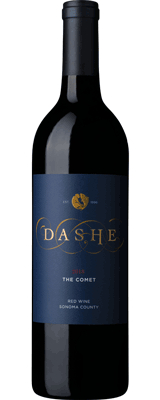
The perfect Zinfandel food pairing
The women in my family have a common addiction... we can sit around a kitchen table and flip through cookbooks for hours on end. Can you imagine how this was transformed for us when food blogging became popular? Over the years, I've discovered new favorite bloggers and explored new cuisines and pairings, specifically Zinfandel food pairing once I started working with Mike and Anne. But no matter how wide my internet roaming goes, I always come back to my favorite blog Smitten Kitchen. I've been making this pot pie recipe for years, and it's an amazing recipe. When paired with our 2018 'The Comet' though, it takes on an entirely new life. Please, before the spring comes, make this recipe & pop the cork on a bottle of Comet... You'll forget that spring training and summer sailing are still months away.
2018 'The Comet' Sonoma County
This wine is made of Petite Sirah and Zinfandel, blended with 130-year-old vine Carignane. The blend makes for a very complex, balanced, dark wine with a long, long finish. It’s a quintessential steak-house wine, made to go with food. It will last in the cellar for years!
Color: Reddish-purple
Aromas: Chocolate, black cherry, blackberry, followed by elements of toffee, vanilla, black pepper, and coffee
Taste: Extremely smooth and velvety entry, wine, with good acid balance, and silky tannins. The entry is of bright fruit—black cherry, blackberry, and pomegranate—and then a lush texture filled with fruit, cocoa powder, clove, and a spicy finish. The wine has a velvety mouthfeel and long finish.
Zinfandel food pairing: Asian 5 Spice Short Ribs, Grilled Venison with Berry Reduction, anything with Mole Poblano Sauce.
Click Here to buy the 2018 'The Comet' Sonoma County
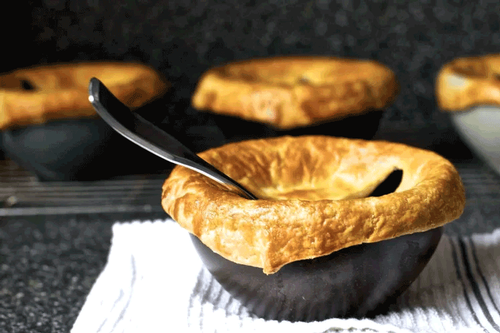
Pancetta, White Bean, and Chard Pot Pies
By Deb Perelman, from The Smitten Kitchen Cookbook - Zinfandel food pairing by Stephanie Flasher
The pancetta, while adding a lovely, smoky base, can be omitted to make this vegetarian. In fact, I went back and forth many, many times about removing it so that this could stay in the vegetarian section, but in the end, decided it easier I leave the choice to you. For a vegetarian version, simply skip the pancetta and cook your vegetables in 2 tablespoons olive oil instead of 1. You can replace the swiss chard with any green you have around, from a hearty spinach to kale, adjusting the cooking time accordingly to make sure it wilts a bit before going into the oven to finish cooking.
As you can see from the photos, I really don’t own soup crocks. I have debated the value of purchasing some many times of the years, but you must trust me when I say I don’t have room for a single extra dish I don’t already own in my life right now. Instead, I just use two-cup bowls we already have that are ovenproof. (When buying a dish set, I always look to see if they are ovenproof, as you never know when this will come in handy.) If you don’t have ovenproof soup bowls, you can always make a large version of this in a casserole dish with one big pastry .
Weekday night tip: Make a double batch of the stew and lids. Keep them separate and for two to three nights, you can ladle what you’d like into bowls, roll out lids and bake them to order.
Serves 4
Ingredients
Lid
- 2 cups (250 grams) all- purpose flour
- 1/2 teaspoon table salt
- 13 tablespoons (185 grams or 1 stick plus 5 tablespoons) cold unsalted butter, diced
- 6 tablespoons (90 grams) sour cream or whole Greek yogurt (i.e., a strained
- yogurt)
- 1 tablespoon (15 ml) white wine vinegar
- 1/4 cup (60 ml) ice water
- 1 egg, beaten with 1 tablespoon water, for egg wash
Filling
- 2 tablespoons (30 ml) olive oil
- 4 ounces (115 grams or 3/4 to 1 cup) 1/4-inch-diced pancetta
- 1 large or 2 small onions, finely chopped
- 1 large carrot, finely chopped
- 1 large stalk celery, finely chopped
- Pinch of red pepper flakes
- Salt and freshly ground black pepper
- 2 garlic cloves, minced
- Thinly sliced Swiss chard leaves from an 8- to 10-ounce (225- to 285-gram)
- bundle (4 cups); if leaves are very wide, you can halve them lengthwise
- 3 1/2 tablespoons (50 grams) butter
- 3 1/2 tablespoons (25 grams) all- purpose flour
- 3 1/2 cups (765 ml) sodium- free or low- sodium chicken or vegetable broth
- 2 cups white beans, cooked and drained, or from one and a third 15.5- ounce
- (440-gram) cans
Directions
Make lids:
In a large, wide bowl (preferably one that you can get your hands into), combine the fl our and salt. Add the butter and, using a pastry blender or your fingertips, cut them up and into the flour mixture until it resembles little pebbles. Keep breaking up the bits of butter until the texture is like uncooked couscous. In a small dish, whisk together the sour cream, vinegar, and water, and combine it with the butter-flour mixture. Using a flexible spatula, stir the wet and the dry together until a craggy dough forms. If needed, get your hands into the bowl to knead it a few times into one big ball. Pat it into a flattish ball, wrap it in plastic wrap, and chill it in the fridge for 1 hour or up to 2 days.
Make filling:
Heat 1 tablespoon olive oil over medium- high heat in a large, wide saucepan, and then add the pancetta. Brown the pancetta, turning it frequently, so that it colors and crisps on all sides; this takes about 10 minutes. Remove it with a slotted spoon, and drain it on paper towels before transferring to a medium bowl. Leave the heat on and the renderings in the pan. Add an additional tablespoon of olive oil if needed and heat it until it is shimmering. Add onions, carrot, celery, red pepper flakes, and a few pinches of salt, and cook over medium heat until the vegetables are softened and begin to take on color, about 7 to 8 minutes. Add the garlic, and cook for 1 minute more. Add the greens and cook until wilted, about 2 to 3 minutes. Season with the additional salt and freshly ground black pepper to taste. Transfer all of the cooked vegetables to the bowl with the pancetta, and set aside.
Make sauce:
Wipe out the large saucepan; don’t worry if any bits remain stuck to the bottom. Then melt the butter in the saucepan over medium- low heat. Add the flour, and stir with a whisk until combined. Continue cooking for 2 minutes, stirring the whole time, until it begins to take on a little color. Whisk in the broth, one ladleful at a time, mixing completely between additions. Once you’ve added one- third of the broth, you can begin to add the rest more quickly, two to three ladlefuls at a time; at this point you can scrape up any bits that were stuck to the bottom — they’ll add great flavor.
Note from Stephanie: to make this an even more perfect Zinfandel food pairing, sometimes I'll substitute a little broth for a splash of The Comet!
Once all of the broth is added, stirring the whole time, bring the mixture to a boil and reduce it to a simmer. Cook the sauce until it is thickened and gravylike, about 10 minutes. Season with salt and pepper. Stir the white beans and reserved vegetables into the sauce.
Preheat your oven to 375 degrees.
Assemble and cook pot pies:
Divide the filling between four ovenproof 2-cup bowls. (You’ll have about 1 1/2 cups filling in each.) Set the bowls on a baking pan. Divide the dough into four pieces, and roll it out into rounds that will cover your bowls with an overhang, or about 1 inch wider in diameter than your bowls. Whisk the egg wash and brush it lightly around the top rim of your bowls (to keep the lid glued on; nobody likes losing their lid!) and drape the pastry over each, pressing gently to adhere it. Brush the lids with egg wash, then cut decorative vents (smaller than mine, please, as they led to lots of draping) in each to help steam escape. Bake until crust is lightly bronzed and filling is bubbling, about 30 to 35 minutes.
Do ahead:
The dough, wrapped twice in plastic wrap and slipped into a freezer bag, will keep for up to 2 days in the fridge, and for a couple months in the freezer. The filling can be made up to a day in advance and stored in a covered container in the fridge.
Click Here to go to the original recipe posting on www.smittenkitchen.com
Enjoy!
If you haven't already, open up that bottle of 2018 'The Comet' and enjoy an absolutely stellar Zinfandel food pairing! I know what I'm going to be making tonight.
Say Cheese! The Right One Makes a Difference
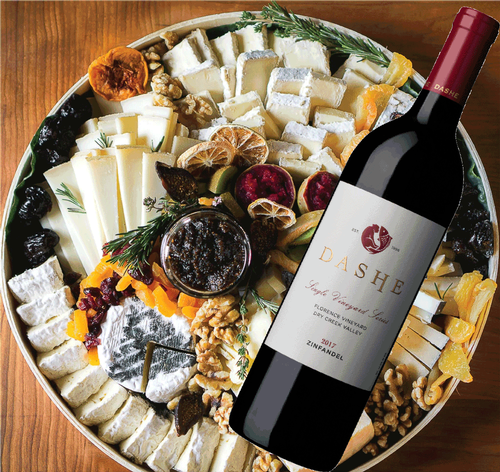
Perhaps one of my favorite things to pair with wine is the ever-changing cheese plate. Wine and cheese are friends from way back. Both are the product of fermentation and both can express terroir, or the taste of the place they come from. In the case of cheese, the taste of terroir emerges from the different milk-giving animals; which can range from cows, goats, sheep and even water buffalos which just happens to make my favorite cheese of all time – Mozzarella di Bufala.
This primer can serve as a perfect introduction to the basics and can offer many ways for you to expand your knowledge and understanding of artisan wine and cheese, delve into the art of pairing the two and help you discover a delicious new dimension to your wine-drinking pleasure. So Let’s Go!
Wine & Cheese Pairing Tips:
The first rule of thumb is that white wines usually pair more easily with artisan cheese than red wines do – sorry red wine lovers. White wine’s acidity cuts through cheese’s butterfat beautifully. The creamy and nutty flavors in cheese can also bring a white wine to life by contrast. Along those lines, some consider Sparkling wine the overall cheese-friendliest wine. Among red wines, the most successful to pair with cheese are the lighter bottlings. Terroir-inspired combinations, artisan wine and cheese coming from the same region, can also be a great pairing strategy.
Pairings that Please:
- White or bloomy rind cheeses such as Camembert and Brie are the trickiest to match; safe bets include one of Dashe’s soft, fruity reds from the Les Enfants Terribles Series. My pairing shortlist would include either the Bio-Dynamically grown Heart Arrow Ranch Zinfandel or the 2017 Clarksburg Grenache that was recently featured in Wine & Food Magazine.
Click Here for 2017 Zinfandel, Heart Arrow Ranch
Click Here for 2017 Grenache, Heringer Vineyard
- Hard cheeses such as Cheddar, Parmesan, and Manchego go with the widest range of wines; safe bets are medium to full-bodied reds without too much tannin. Insert an age-worthy artisan Zinfandel here – one of Dashe’s Single Vineyard Zinfandel would be just the ticket. For me, I’d unapologetically sink my teeth into the Florence Vineyard Zinfandel along with a hunk of Parmigiano- Reggiano.
Click Here for 2017 Zinfandel, Florence Vineyard
- Blue cheeses can be troublesome partners for any wine apart from the classic partnerships of port and Stilton. The salty with sweet principle prevails so why not try Dashe Late-Harvest Zinfandel from the Lily Hill Vineyard, Dry Creek Valley in Sonoma with your favorite blue veined cheese. My favorite blue is Point Reyes Original Blue also from Sonoma County – things that grow together go together.
Click Here for 2017 Late Harvest Zinfandel, Lily Hill Vineyard
- Strong, pungent cheese offers no safe bets. Sweet or fortified wines are likely to pair well or try an aromatic white such as the classic combination of Munster from Alsace and Riesling. Dashe Dry Riesling from McFadden Farm has a depth of flavor that makes it one of the most age-worthy Rieslings our artisan winery has ever produced, and it’s structured enough to stand up to strong cheeses.
Click Here for 2019 Dry Riesling, McFadden Farm
- For Goat milk cheeses, Sparkling wine is a good match especially with young soft artisan cheeses; the more acid in the cheese the more acid the wine should have. Along with crisp acidity, sparkling wine possesses wonderful bubbles to cleanse the palate. The 2016 marked the 20th Anniversary of Dashe Cellars and to commemorate we released Dashe 2016 Méthode Champenoise Sparkling wine.
Click Here for 2016 Sparkling Wine, Methode Champenoise
- Sheep milk cheese can handle a robust red made from Mourvedre, Carignane or Zinfandel. Hard to decide which direction to go in? Why not have it all with Dashe Ancient Vines Sonoma blend. Another option would be to go with one of two Dashe Single Vineyard Petite Sirah; Louvau or Todd Brothers Ranch, which is a wine club exclusive.
Click Here for 2017 'Ancient Vines', Sonoma County
Click Here for 2018 Petite Sirah, Louvau Vineyard
Click Here for 2018 Petite Sirah, Todd Brothers Ranch
Strategies for Harmony:
Cheese and wine is a classic pairing - like peanut butter and jelly or cookies and milk. Both are natural artisan products, created using a standard process but with a myriad of results. When planning a cheese platter, try upping the ante with roasted nuts, walnut bread and a selection of dried fruits to create a more wine-friendly match. When serving a selection of artisan cheeses, try to choose three or four which all pair well with a particular style of wine. Highly oaked and super-tannic wines can be difficult to pair with cheese so try avoiding these options.
Just say cheese please!

